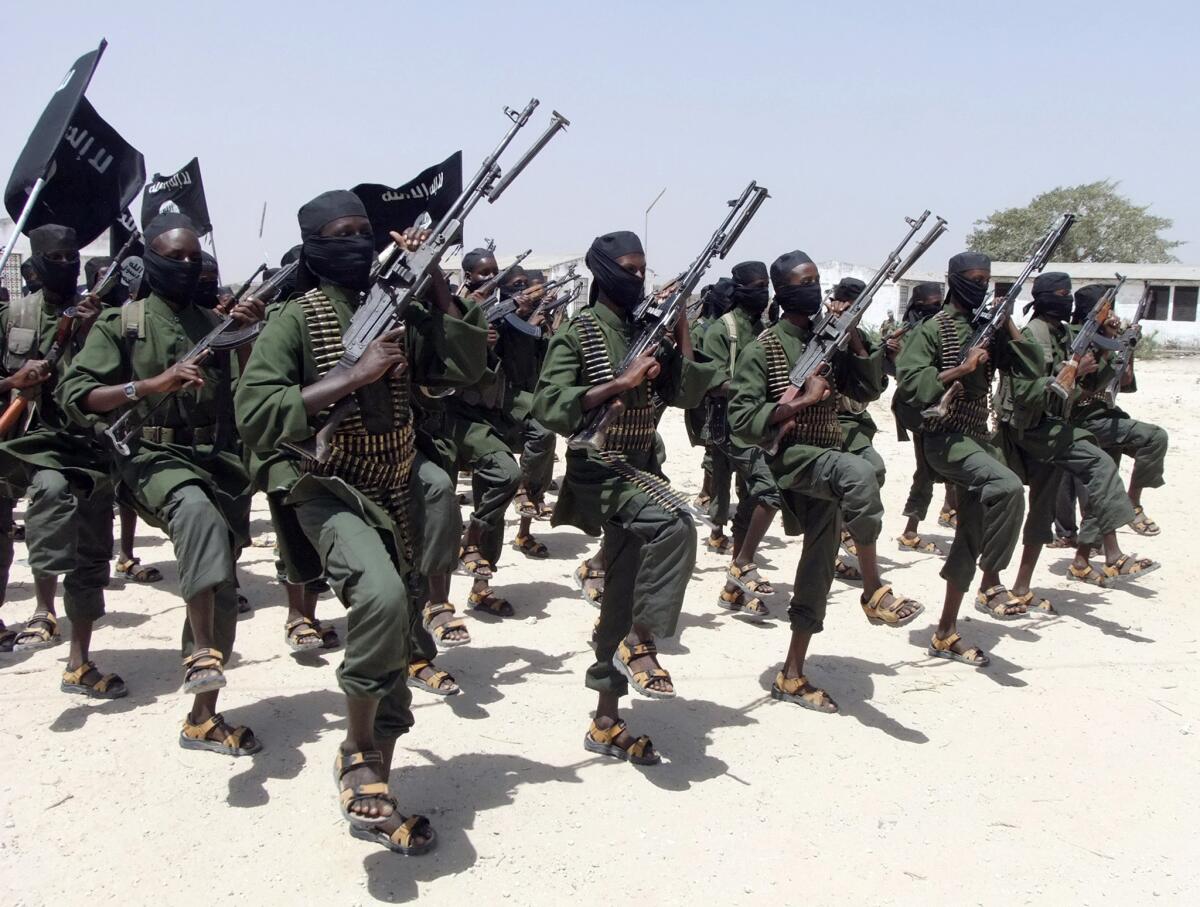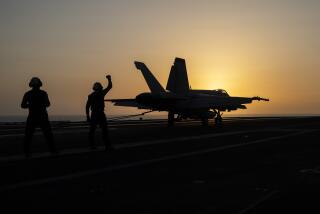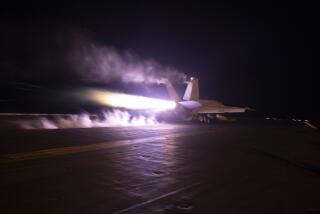U.S. raids in Libya, Somalia reflect shift away from drone strikes

WASHINGTON -- The Obama administration’s decision to mount two risky capture raids against Al Qaeda operatives in North Africa reflects a reduced role for lethal CIA drone strikes and a growing role for the Pentagon in leading counter-terrorism operations, U.S. officials said Sunday.
In storming the coastal Somalia home of a leader of Shabab, the Somali-based group that claimed responsibility for last month’s massacre inside a shopping mall in Nairobi, the Obama administration opted to put U.S. Navy SEALs at risk against a fixed target that could have been destroyed with bombs or missiles from the air.
The suspect sought in the raid was not captured, though he may have been killed in a firefight that ultimately forced the U.S. force to withdraw, officials said. Unconfirmed reports Sunday indicated the U.S. operation was aimed at Shabab’s charismatic leader, Ahmed Godane, who recently carried out an internal purge of the organization.
In Libya, where a joint operation by U.S. military and intelligence agencies captured a suspect indicted for his alleged role in Al Qaeda’s 1998 bombings of U.S. embassies in Kenya and Tanzania, drone strikes were not an option. The suspect was grabbed off a street in Tripoli, the capital city, and the United States has no nearby base from which to launch an armed drone, officials said.
Still, sending the U.S. military to lead the capture marked a tactical change in U.S. counter-terrorism efforts.
CIA paramilitary teams grabbed scores of suspected Al Qaeda operatives and supporters off the streets of Pakistan, the Middle East and even Italy in the years after the Sept. 11 attacks in 2001. But the agency stopped capturing suspects after its harsh interrogation and secret detention program came to light and the agency closed its so-called “black site” prisons overseas.
For the U.S. military to conduct a capture in the capital of a country in which it is not conducting military operations “is extremely rare,” one senior congressional aide said.
“I think this goes along with this policy that they are trying to move counter-terrorism operations from CIA to Defense, and trying to operate less with drones,” said the aide, who was not authorized to be quoted discussing the sensitive operations.
Caitlin Hayden, a spokeswoman for the National Security Council, praised the “exceptional work” of U.S. military and intelligence agencies in capturing Abu Anas al Liby, who is now being held outside Libya.
President Obama “has made clear our preference for capturing terrorist targets when possible, and that’s exactly what we’ve done in order to elicit as much valuable intelligence as we can and bring a dangerous terrorist to justice,” Hayden said.
“This operation should be a clear reminder that the United States will seek justice against those who would attack Americans, and never forgets those who are victims of terrorism,” she added.
ALSO:
Israeli girl shot outside her West Bank home
Irish voters reject plan to abolish nation’s Senate
Pro-government crowds clash with Islamists in Egypt
More to Read
Sign up for Essential California
The most important California stories and recommendations in your inbox every morning.
You may occasionally receive promotional content from the Los Angeles Times.










